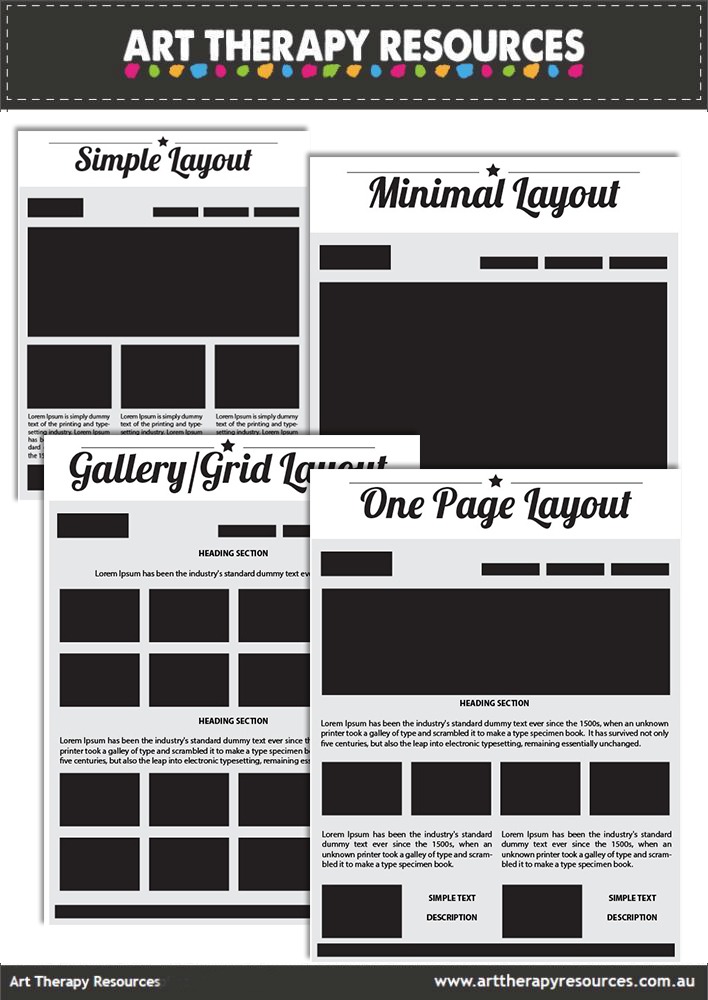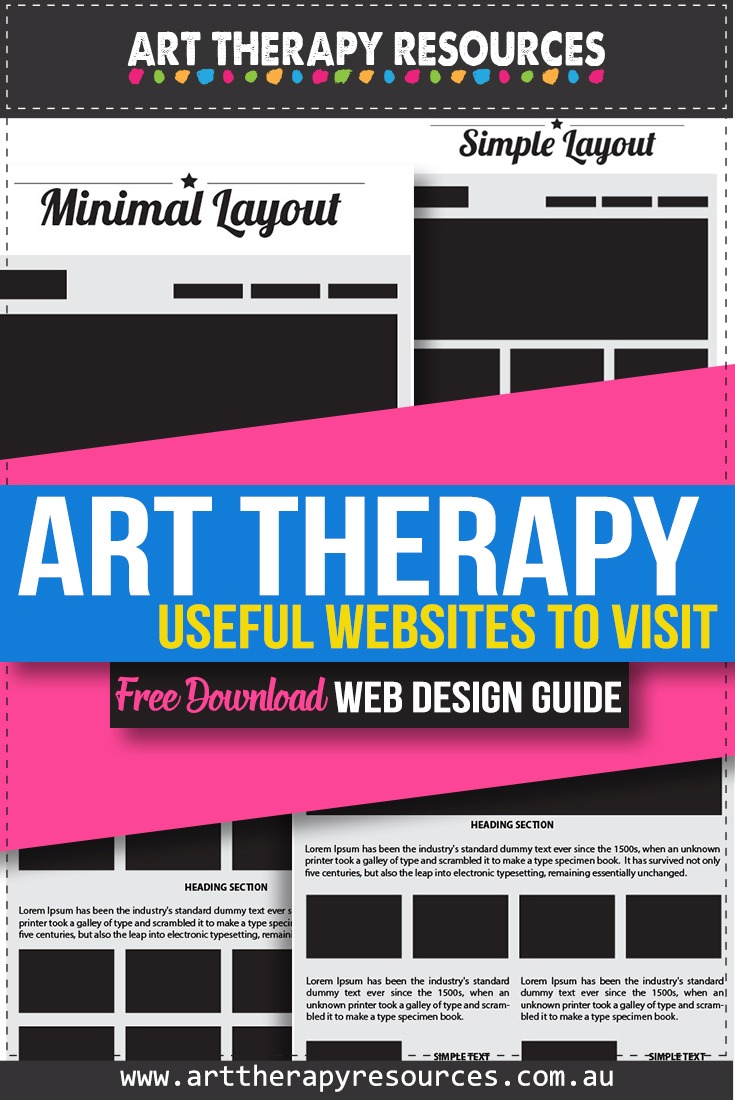THIS POST INCLUDES:
1. Websites about art therapy
2. 10 Useful art therapy websites
3. Creating your own website
4. Free Download Website Design Guide
WEBSITES ABOUT ART THERAPY
As an art therapist or student, it’s important to keep growing as an art therapist by exposing yourself to new ideas and techniques in the field. As an art therapist, you have formal avenues to develop your knowledge of art therapy such as universities, colleges, journals, and associations. It’s also useful to connect with other therapists in the field to learn from their knowledge and experience in art therapy.
Art therapists working in the field are exposed to an evolving demographic of clientele that helps us understand the current problems that clients are facing. As other art therapists share content through their own websites and blog writing, this can help build your database of knowledge on how to work with similar clients in your practice.
We all develop our own routines and standards of practice in our therapy work. Being exposed to ideas from other art therapists can help us challenge those routines and standards or confirm they are best practice within art therapy. Exposing ourselves to new ideas gives us the opportunity to confirm and expand our understanding within the field of art therapy.
There are a number of ways we can seek information about the field of art therapy amongst peers. Those common methods offline include conferences, networking events, continuing education courses, and self-improvement workshops.
The most common online avenues include blogs/websites, social media, podcasts, and message boards. Social media is a useful method of reading information in a shortened framework where content is primarily created for easy sharing. Message boards usually allow a more flexible approach to interacting with other members through developing discussions. Podcasts provide educational and conversational content that can help increase our knowledge within our field.
Reading websites with blog content allows us to read more in-depth opinions from practitioners within the field. Often this written content can provide us with practical steps that we can implement in our own practice.
10 USEFUL ART THERAPY WEBSITES
Below is a list of 10 Art Therapy websites to add to your reading list. The list attempts to focus on websites with blog content and excludes professional art therapy association type websites.
You can check out professional art therapy association websites on our previous blog post here:
CREATING YOUR OWN WEBSITE
You may also want to consider starting your own website as part of your therapy business. A website is usually a static set of pages that don’t change regularly.
This includes pages such as the below:
- Homepage explaining what your business offers
- About me page explaining who you are
- Contact page where you list your business details
These pages rarely change because the information contained on them is permanent unless you move your business.
In addition to these static pages, you can also add a blog to your website where you contribute your own content to the blog consistently. Unlike your static pages listed above, a blog constantly changes as you add new content to it.
Your blog content should relate to your business. In the case of an art therapy practice, your blog content would focus on art therapy and it’s benefits to your potential new clients who read your blog. You may also want to add blog content that benefits the art therapy profession instead of clients.
Below are some benefits of blogging that can help your business and yourself as a professional:
- Increases search engine traffic – adding fresh content to your website increases the usefulness of your website to other readers. This is viewed favourably by Google and will, therefore, help your website rank higher in searches that potential readers will make regarding art therapy
- Personalises your business – adding written content to your blog provides your readers with the opportunity to learn more about you and your approach to therapy
- Builds a professional profile – writing regular blog content about art therapy topics can help develop your level of authority in your niche. If you wish to pursue teaching, tutoring, speaking, or other public roles in art therapy, then creating regular written content will help build your authority.
- Builds new skills – writing blogging content can help you develop new skills including writing, social media, internet marketing, and publishing. This can help you develop future content based projects such as writing ebooks, developing courses, and conference talks.
- Marketing – having written content on your website means readers can share your website content with other potential readers. This is an effective word of mouth technique that can help market your art therapy practice amongst potential clients and other professional networks.
- Contributes to the art therapy profession – your written content plays a valuable part in educating other professionals and potential clients. When people find your written content on the internet about art therapy, their understanding of the profession and its benefits improves the overall knowledge of art therapy to the public.
RECOMMENDED READING ABOUT CREATING YOUR WEBSITE
Below is a list of blog posts we’ve created previously that will develop your understanding of how to build your own art therapy website and blog:
- Design a Simple Layout for Your Art Therapy Website Design
- What are Brand Image Assets and Why Do I Need Them?
- Link List: 10 Blogging Tools to Boost Your Content Writing Productivity
- 10 Useful Tips to Use Evernote for Blogging
- Link List: Image Resources to Use For Your Art Therapy Blog
- How to Backup Your Important Business Files
- 10 SEO Tools to Improve Your Website Functionality
FREE DOWNLOAD: Website Design Guide
SIGN UP below to download the FREE Website Design Guide.

BUILD YOUR ART THERAPY REFERENCE MATERIALS:
Pin this image to your Pinterest board.

SHARE KNOWLEDGE & PASS IT ON:
If you’ve enjoyed this post, please share it on Facebook, Twitter, Pinterest. Thank you!
